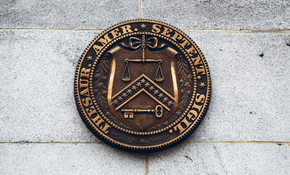On January 1, 2021, the United States implemented the National Defense Authorization Act (NDAA), a comprehensive regulatory package aimed at bolstering defense and national security. With the approval of Congress, this legislation introduced several noteworthy advancements in the economic and fiscal realms. One crucial aspect of the NDAA was the reform of The US Patriot Act 2001, which was replaced by The Anti-Money Laundering Act. Professionals well-versed in anti-money laundering (AML) practices are familiar with the Patriot Act, a set of laws enacted by former President W. Bush on October 26, 2001, in response to the immediate need to combat money laundering following the terrorist attacks earlier that year. The Patriot Act granted additional authority to public and economic surveillance bodies like the FBI, CIA, and NSA, empowering them to identify illicit financial transactions with the collaboration of foreign entities. The Anti-Money Laundering Act builds upon the foundation laid by the Patriot Act, aligning it with evolving global standards and further enhancing the United States' ability to combat the financing of terrorism and money laundering activities.
The Key Provisions of the US Anti-Money Laundering Act 2021
- Establishment of a Register of Company Owners: The implementation of a register that includes the details of company owners, such as managing directors and CEOs, aims to enhance transparency and accountability within companies and firms.
- Enhanced AML Reporting System: The AML Act introduces a strengthened reporting system, similar to the operational and regulatory systems defined by the Securities Exchange Act and Dodd-Frank. This enhancement seeks to improve the detection and reporting of suspicious financial activities, further bolstering the fight against money laundering.
- Increased Regulatory Powers over Foreign Institutions: The new legislation grants expanded powers to US regulators concerning foreign institutions. This step aims to ensure closer scrutiny and oversight of international financial transactions to prevent illicit activities and enhance cooperation between regulatory bodies across borders.
- Application of AML/CFT Regimes to Financial Markets: The Anti-Money Laundering Act extends the application of AML/CFT regimes to financial markets, contributing to investment protection. This move strengthens the domestic sanctions system and promotes interagency cooperation to safeguard the integrity of financial markets.
- Expansion of AML Sanctions: To further combat money laundering, the Act introduces new violations into the Bank Secrecy Act (BSA) and increases the issuance of AML sanctions. These measures serve as deterrents and penalties against individuals and entities involved in illicit financial activities.
- Updated and Shared SAR and STR: The legislation emphasizes the review, update, and sharing of Suspicious Activity Reports (SAR) and Suspicious Transaction Reports (STR) with authorities in foreign states. This exchange of information strengthens international efforts to combat money laundering and terrorist financing.
- Review of AML/CFT Governance and Mitigation Priorities: The Anti-Money Laundering Act calls for a comprehensive review of priorities and policies governing AML/CFT measures. This assessment aims to identify potential gaps, improve effectiveness, and adapt strategies to evolving threats in the financial sector.
- Strengthening Regulatory Powers under the DSA Law: The Act enhances regulatory powers under the DSA (Digital Services Act) with regard to planned information activities, specifically by sharing relevant information with the Department of Justice (DOJ) and the Department of the Treasury. This collaboration aims to streamline efforts and improve the efficiency of investigations and prosecutions related to money laundering.
These key provisions of the Anti-Money Laundering Act reflect a comprehensive approach to combat money laundering, enhance financial transparency, and strengthen cooperation between domestic and international authorities. By addressing loopholes, updating reporting systems, and expanding regulatory powers, the Act reinforces the United States' commitment to safeguarding the integrity of its financial systems and protecting against illicit financial activities.
An In-depth Look into the Details of the Act
Point 1: Establishing a Register of Beneficial Owners
The US Anti-Money Laundering Act 2021 mandates the creation of a register of beneficial owners managed by FinCEN (Financial Crimes Enforcement Network). Access to the register will be limited to identified individuals with concrete interests and will comply with the principles outlined in the Corporate Transparency Act, ensuring data protection and confidentiality. The register will contain personal details of company owners and directors who have a share capital exceeding 25%. This represents a new supervisory policy for the United States, aligning it with European countries that have implemented similar measures to identify owners, including non-residents. It encompasses various organizational structures, such as companies, trusts, profit-making associations, and LLCs.
Point 2: Incentivizing AML Reporting and Whistleblower Protections
The US Anti-Money Laundering Act 2021 introduces economic incentives for reporting suspicious AML activity. Unlike Europe, US law allows for the remuneration of whistleblowers. The Act strengthens protections for whistleblowers, including confidentiality and safeguards in labor relations and judicial processes. Reports must be true, original, and involve harm to the state of at least $1 million.
Point 3: Strengthening Inspection and Cooperation with Foreign Financial Authorities
The Act grants increased powers of inspection and cooperation between foreign and US financial authorities, particularly regarding foreign bank accounts. It stipulates that banks must cooperate and provide necessary assistance for financial investigations. Failure to comply will result in specific sanctions imposed by the Department.
Point 4: Simplifying Data Storage and Processing for AML
The Act prioritizes simplifying data storage and processing for AML purposes in public and private institutions. The aim is to digitize processes using the OCC system and modernize it to accommodate emerging forms of currency, such as cryptocurrencies. It also enhances IT availability for police support, with the harmonization mandate entrusted to FinCEN.
Point 5: Imposing Sanctions for Violations
The Act grants the Secretary of the Treasury the power to impose sanctions for AML violations. It includes compensatory economic sanctions and disqualifies individuals involved in financial institutions from holding positions or functions on the Board of Directors for ten years.
Point 6: Sharing SARs with Central Financial Supervisors
Under the Act, Suspicious Activity Reports (SARs) and STRs will be shared with central financial supervisors in respective countries, initially for a three-year cooperation period. Further cooperation with branches and subsidiaries may be established. This cooperation is also open to countries under US sanctions, with an initial two-year cooperation project.
Point 7: Issuing AML/CFT Priority Policies
Within 180 days of publication, the Department of the Treasury, the Department of Justice, and relevant government authorities must issue AML/CFT priority policies. These policies must align with national policy and defense strategies, with updates every four years.
Point 8: Reporting to Congress and Establishing Information and Judicial Cooperation
The Act mandates the DOJ to prepare an annual report to Congress highlighting actual violations of the BSA. The report should include actions taken to combat and mitigate risks, as well as the factors and indices used to determine those actions. The DOJ must also report on information and judicial cooperation established with other government authorities.
To ensure compliance with the law and reduce the risk of sanctions, businesses and organizations can use the advanced compliance tools of the Sanctions Scanner. The Sanctions Scanner provides comprehensive AML solutions, including customer due diligence, transaction monitoring, and sanctions scanning. By leveraging advanced technology and robust databases, the Sanctions Scanner helps businesses stay compliant with AML regulations, identify potential risks, and reduce the threat of financial crime.
Take a step towards compliance today and meet the Sanctions Scanner for more information about how their solutions can support your AML efforts. Together, let's create a safer and more secure financial environment for everyone.







